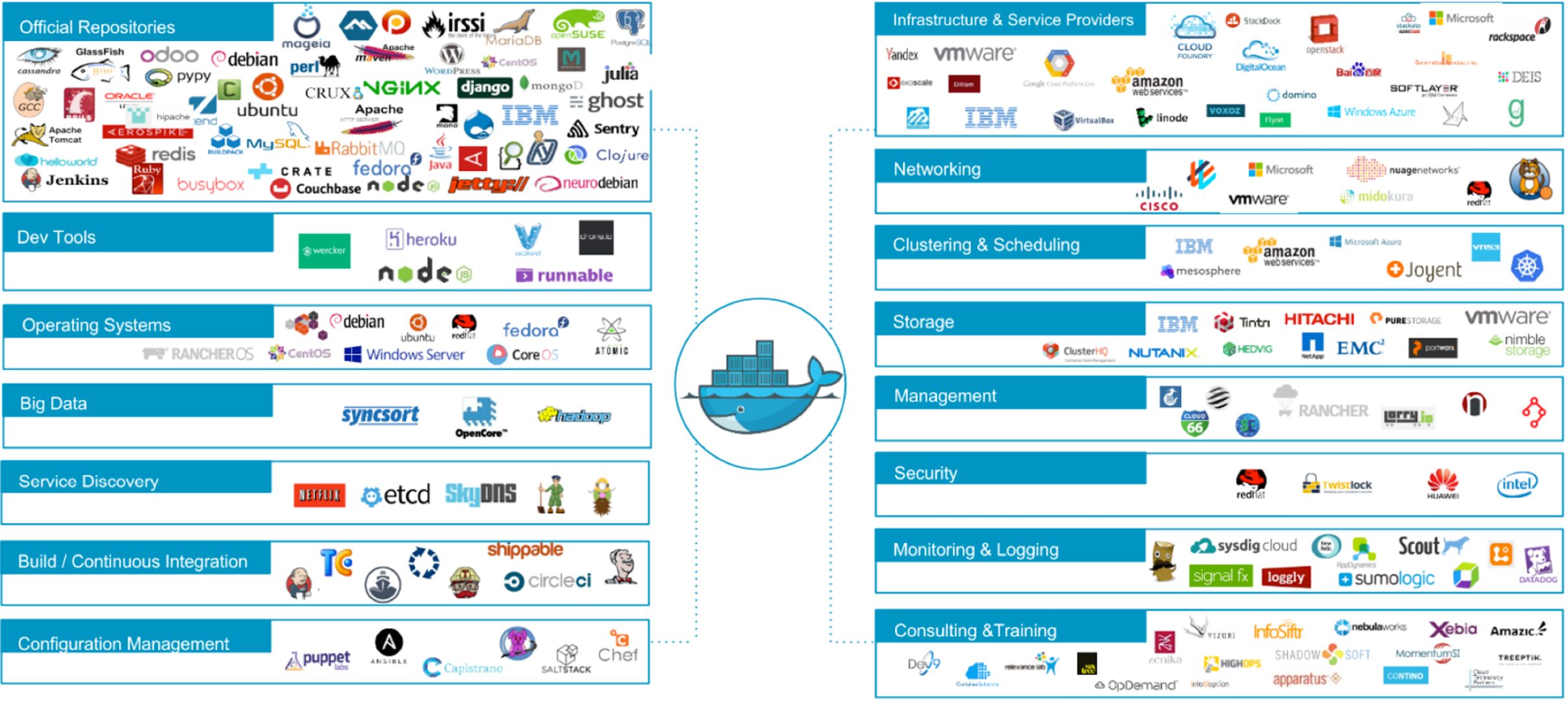The container ecosystem
- Introduction
- The Docker ecosystem
- Moby vs. Docker
- Exercise in brand management
- What if ...
- From Docker to Moby
- Other examples
- Docker CE vs Docker EE
- The CNCF
Introduction
In this chapter, we will talk about a few actors of the container ecosystem.
We have (arbitrarily) decided to focus on two groups:
the Docker ecosystem,
the Cloud Native Computing Foundation (CNCF) and its projects.
The Docker ecosystem

Moby vs. Docker
Docker Inc. (the company) started Docker (the open source project).
At some point, it became necessary to differentiate between:
the open source project (code base, contributors...),
the product that we use to run containers (the engine),
the platform that we use to manage containerized applications,
the brand.

Exercise in brand management
Questions:
What is the brand of the car on the previous slide?
What kind of engine does it have?
Would you say that it's a safe or unsafe car?
Harder question: can you drive from the US West to East coasts with it?
The answers to these questions are part of the Tesla brand.
What if ...
The blueprints for Tesla cars were available for free.
You could legally build your own Tesla.
You were allowed to customize it entirely.
(Put a combustion engine, drive it with a game pad ...)
You could even sell the customized versions.
... And call your customized version "Tesla".
Would we give the same answers to the questions on the previous slide?
From Docker to Moby
Docker Inc. decided to split the brand.
Moby is the open source project.
(= Components and libraries that you can use, reuse, customize, sell ...)
Docker is the product.
(= Software that you can use, buy support contracts ...)
Docker is made with Moby.
When Docker Inc. improves the Docker products, it improves Moby.
(And vice versa.)
Other examples
Read the Docs is an open source project to generate and host documentation.
You can host it yourself (on your own servers).
You can also get hosted on readthedocs.org.
The maintainers of the open source project often receive support requests from users of the hosted product ...
... And the maintainers of the hosted product often receive support requests from users of self-hosted instances.
Another example:
WordPress.com is a blogging platform that is owned and hosted online by Automattic. It is run on WordPress, an open source piece of software used by bloggers. (Wikipedia)
Docker CE vs Docker EE
Docker CE = Community Edition.
Available on most Linux distros, Mac, Windows.
Optimized for developers and ease of use.
Docker EE = Enterprise Edition.
Available only on a subset of Linux distros + Windows servers.
(Only available when there is a strong partnership to offer enterprise-class support.)
Optimized for production use.
Comes with additional components: security scanning, RBAC ...
The CNCF
Non-profit, part of the Linux Foundation; founded in December 2015.
The Cloud Native Computing Foundation builds sustainable ecosystems and fosters a community around a constellation of high-quality projects that orchestrate containers as part of a microservices architecture.
CNCF is an open source software foundation dedicated to making cloud-native computing universal and sustainable.
Home of Kubernetes (and many other projects now).
Funded by corporate memberships.
